In nature, the competition for survival is extremely fierce. In order to protect themselves from predators, many animals have evolved unique defense mechanisms to cleverly deal with threats. The following are several animals with the coolest defense mechanisms. Their survival skills are not only amazing, but also show the wisdom and diversity of nature.
The box jellyfish is a creature living in tropical oceans, known for its transparent body and deadly toxicity. Its defense mechanism is extremely effective and deadly.
Defense Mechanism: The tentacles of the box jellyfish are covered with stinging cells, which are highly toxic. When threatened or feels in danger, it releases toxins that can paralyze or kill predators or prey within minutes.
Cool Point: The toxins of box jellyfish are also extremely lethal to humans. Their transparent bodies make it difficult for predators to detect them, further enhancing their survival ability.

Opossums are known for their defense mechanism of playing dead. When encountering predators, they will show a state of "playing dead" to avoid attacks.
Defense Mechanism: When an opossum feels threatened, it will enter a state similar to death, with a stiff body, foaming at the mouth, and even emitting a corpse-like odor, which will make predators mistakenly think that it is dead and lose interest.
Cool point: This state of suspended animation can last from minutes to hours, and the opossum cannot control this process by itself. It is a natural physiological reaction.
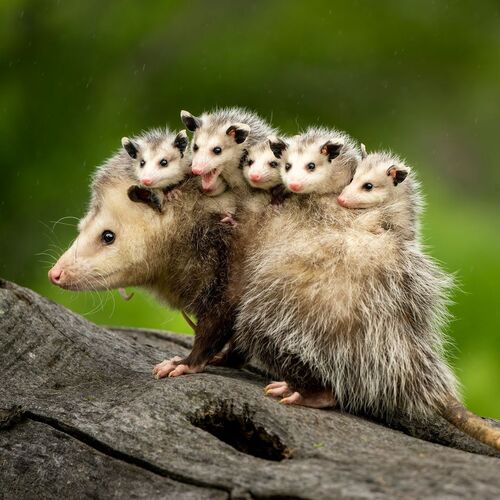
Beetles are one of the most complex members of the insect class in terms of defense mechanism, especially bombardier beetles, which can effectively defend themselves through chemical reactions.
Defense mechanism: When attacked, bombardier beetles will spray a scalding chemical liquid from their abdomen. This liquid is a mixture of two chemicals in the beetle's body, with a temperature of up to 100°C and a pungent smell, enough to make predators flee in panic.
Cool Point: This defense not only involves complex chemical reactions, but also requires the beetle to have precise control to avoid harm.
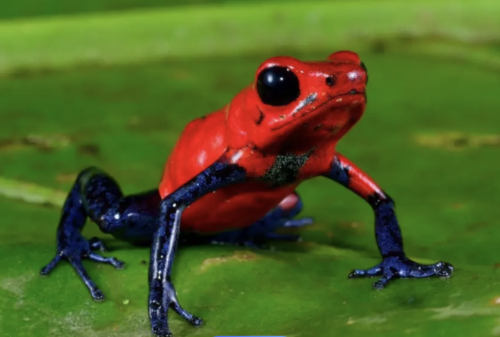
Cuttlefish are famous for their excellent color-changing ability. By changing their body color, they can easily blend into the environment and avoid the attention of predators.
Defense Mechanism: Cuttlefish have pigment cells and pigment sacs in their bodies. They can quickly adjust these cells to change the color of their bodies and simulate the surrounding environment to achieve camouflage. In addition, cuttlefish can also spray ink to allow themselves to escape quickly in critical moments.
Cool Point: Cuttlefish can not only change their body color according to the environment, but can even imitate the texture of other animals or objects, making their camouflage more realistic.
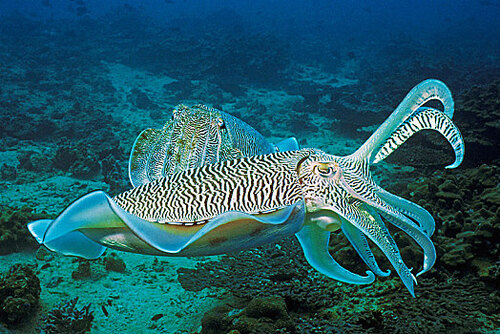
Porcupine is a naturally armored animal covered with spiky bristles, which makes it a nightmare for predators.
Defense Mechanism: When a porcupine feels threatened, it will erect its spikes and quickly swing its tail at the predator. These spikes have barbs, which will be extremely difficult to pull out once they penetrate the predator's skin, and may even cause infection.
Cool Point: Porcupine's quills not only have physical defense functions, but also can visually deter predators, increasing their chances of survival.

Poison dart frogs are one of the most poisonous animals in the world. They secrete highly toxic substances on their body surface, which is a powerful weapon to defend against predators.
Defense Mechanism: Poison dart frogs secrete highly toxic chemicals on their skin, which can poison or even kill predators. Many predators will quickly retreat after contact with poison dart frogs and avoid eating them.
Cool Point: These frogs tend to be brightly colored, which serves as a warning to predators that they are poisonous.

Flea crabs are small marine creatures whose defense mechanism relies on extreme transparency and camouflage skills.
Defense Mechanism: Flea crabs are almost completely transparent, which allows them to blend in with their environment and make them difficult for predators to detect. In addition, they can also perch on anemones and use the anemone's stinger to protect themselves.
Cool Point: Their transparent bodies make them look as if they are integrated with the water, making it almost impossible for predators to detect their presence.
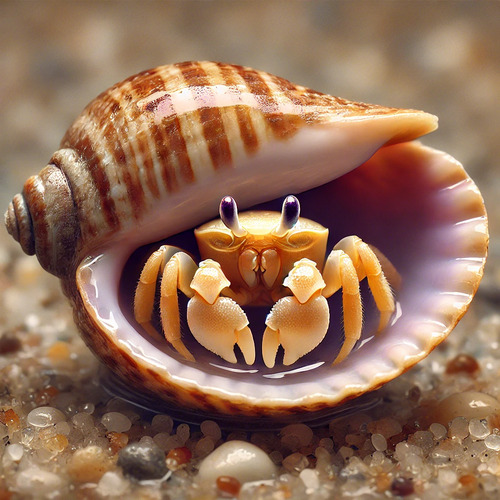
Although squirrels look gentle and cute, some squirrels have evolved incredible defense strategies. They use snakeskin as a defense tool to confuse predators.
Defense Mechanism: In the western United States, a species of ground squirrels collects fragments of snakeskin and rubs them on their fur. The smell of snakes can confuse or frighten predators such as rattlesnakes, thus avoiding attacks.
Cool Point: Squirrels use predators' "weapons" to protect themselves. This clever behavior shows the innovation of animals in defense strategies.
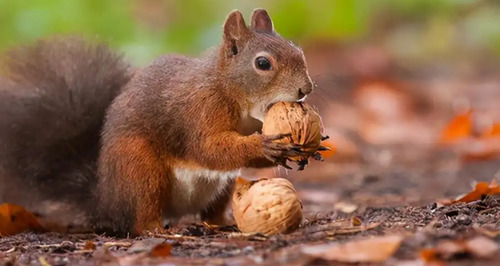
Flying fish have a unique defense mechanism. They escape predators by leaping over the water, demonstrating an extraordinary escape strategy in nature.
Defense Mechanism: Flying fish have long pectoral fins that allow them to "fly" a short distance over the water. When a predator chases them, they suddenly jump out of the water and glide for dozens of meters, thus quickly getting rid of the predator's pursuit.
Cool Point: Flying fish have extremely fast gliding speeds, and can even leap over ships, making them one of the most flexible escape masters in the ocean.
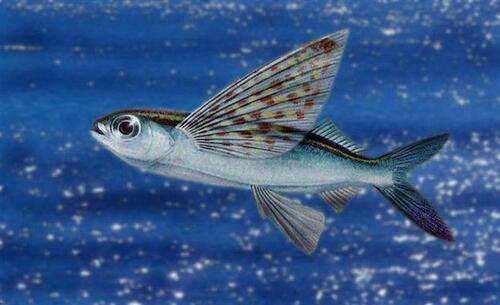
The defense mechanisms of animals in nature show the wonder and diversity of life. Each animal has gained its own foothold in the cruel competition for survival through unique evolutionary methods. From chemical sprays to playing dead, to complex camouflage and flight escape, these cool defense mechanisms not only help them avoid predators, but also reveal to us the infinite charm of biological evolution.
In nature, herbivores usually feed on plants and have no need to hunt. However, when faced with threats or in order to compete for resources, many herbivores have evolved aggressive behavior to protect themselves, their own kind or their territory. Here are some herbivores with aggressive behavior, which are no less ferocious than predators.
Although hippos are typical herbivores that feed mainly on grass, they are extremely aggressive and are considered one of the most dangerous animals in Africa.
Aggressive behavior: Hippos have huge mouths and sharp teeth. When they feel threatened, they will quickly attack, which is deadly to both predators and humans. Hippos are also known for their strong sense of territory, especially in water, and may attack any creature that enters their territory.
Reasons for attack: Hippos usually attack to protect their territory or their cubs. Their defensive instinct makes them fearsome animals, and they will not back down even when facing natural enemies such as crocodiles and lions.
African buffalo is a herbivorous animal, but it will show high aggression when threatened. They sometimes even take the initiative to attack predators such as lions.
Aggressive behavior: The aggression of buffalo is mainly reflected in their charging attack. They will rush at the enemy with their huge horns and attack in groups. If a buffalo is attacked, the entire group may fight back against the predator or even chase the prey.
Reasons for attack: Buffalo's aggressiveness is largely due to self-protection and group defense, especially when facing predators such as lions, buffalo will fight back to protect the weak and cubs in the group.
Although wild boars mainly feed on plants, they are extremely aggressive, especially male wild boars during the breeding season.
Aggressive behavior: Wild boars have sharp tusks and strong bodies. They will launch fierce attacks when they feel threatened or encounter competition. Their impact and bite force are enough to cause serious damage to the enemy.
Reasons for attack: Wild boars' offensive behavior is usually related to territorial disputes and mating rights. Male wild boars are particularly likely to take the initiative to attack in order to compete for mates or protect territory.
Elephants are the largest land animals in the world. Although they feed on plants, they show strong offensive capabilities when threatened.
Aggressive behavior: Elephants' attack methods include charging, trampling, and stabbing enemies with tusks. They have great strength, especially when male elephants are in estrus (called "Musth"), hormone fluctuations can make them very irritable and aggressive.
Reasons for attack: Elephants usually attack when they feel threatened, especially when their cubs or groups are in danger. Territorial awareness and protecting the family are the main reasons for their attacks.
Moose are herbivores living in North America, Europe and Asia, known for their huge bodies and powerful attack power.
Aggressive behavior: Moose's front hooves are their most powerful weapons. When they feel threatened, they will kick the enemy with their front hooves, and can even repel predators. Male moose also use their huge antlers to compete for mates or territory during mating season.
Reasons for attack: Moose are usually aggressive in order to protect themselves or their young. They are particularly aggressive in winter or during the mating season.
Although rhinoceroses are herbivores that feed mainly on grass and leaves, they are extremely aggressive, especially when threatened.
Aggressive behavior: Rhinoceroses attack mainly with their huge bodies and sharp horns. They can charge at astonishing speeds, enough to knock enemies away. In addition, rhinoceroses will not hesitate to attack when they feel threatened or provoked.
Reasons for attack: Rhinos' aggression is usually related to protecting territory and defending against predators. Especially when they feel threatened or provoked, they will charge quickly and show strong attack power.
Ostrich is the largest bird in the world, feeding mainly on grass and seeds. However, ostriches are very aggressive when facing threats.
Aggressive behavior: Ostrich's feet are extremely strong, and their kicks can cause fatal damage to predators. Ostrich's kicking power is enough to repel large predators such as lions, and their long legs can also help them escape or attack quickly.
Reasons for attack: Ostriches usually attack in self-preservation or to protect their nests and young. They will quickly strike back with their legs when they feel threatened, using their strong claws to attack their enemies.
Antelopes are herbivores known for their speed and agility. However, many antelopes also exhibit aggressive behavior when facing predators.
Aggressive Behavior: The main offensive method of antelopes is to attack their enemies with their horns, especially during the mating season, when male antelopes will engage in fierce fights to compete for mates. In addition, when antelopes feel besieged, they will also use their speed and agility to attack.
Reasons for attack: Antelopes' aggressive behavior is often related to mating competition and self-defense. When they have nowhere to escape, they use their horns for a final stand.
Although herbivores mainly feed on plants and have no need to hunt, they can also be extremely aggressive when faced with threats. Whether it's a deadly charge from a hippopotamus or a fierce kick from a moose, these herbivores protect themselves and their groups through aggressive behavior, demonstrating complex survival strategies in nature.
animal tags: Box-Jellyfish Flying-Fish Squirrel - Snakeskin-Defense
We created this article in conjunction with AI technology, then made sure it was fact-checked and edited by a Animals Top editor.